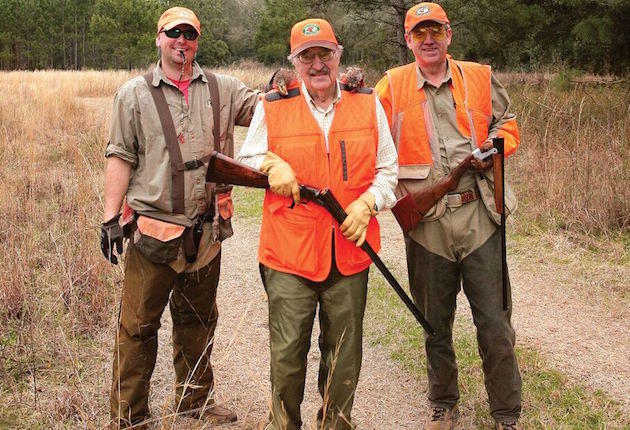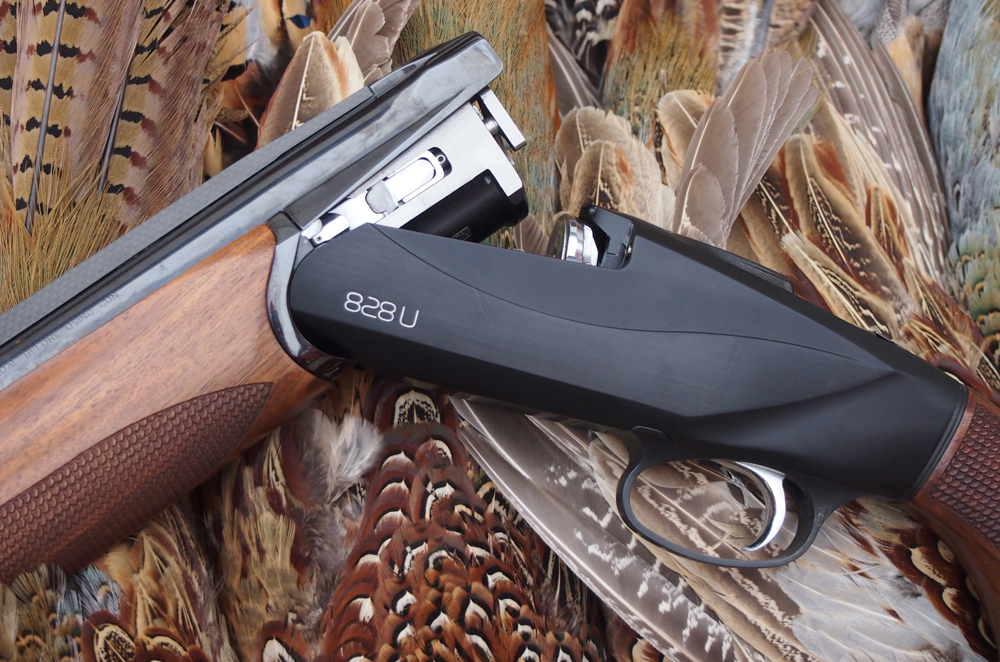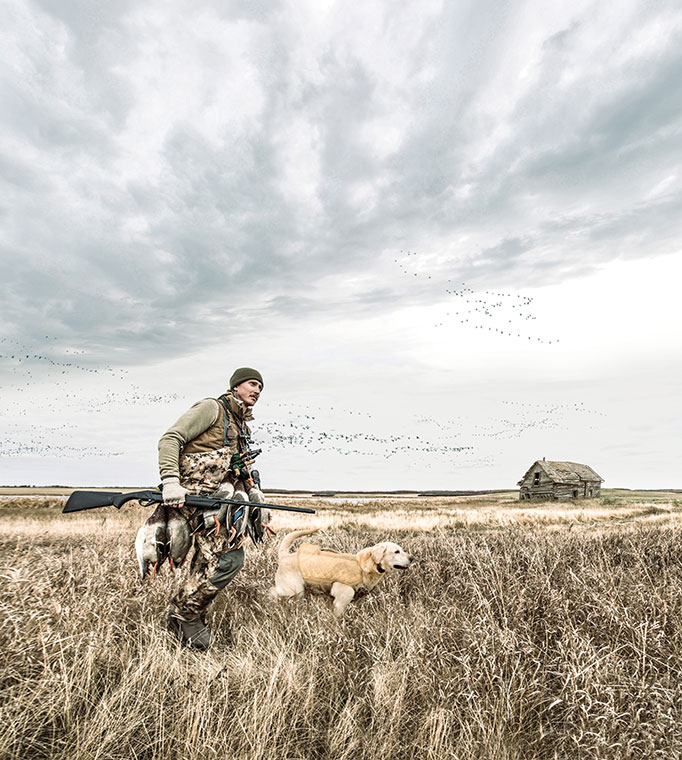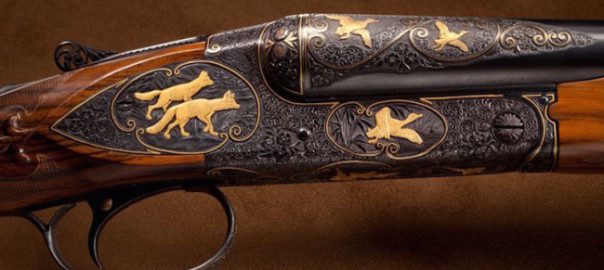I should have known that one day it would happen, that one day our trails would cross.
As shooting editor of Outdoor Life for 38 years, Jim Carmichel had long ago earned his reputation as America’s premier gun writer. I had been reading his words since long before I ever seriously considered becoming a writer myself. In fact, it was one of Jim’s stories, “When A Lion Comes to Kill You,” that I’d read when still an all-knowing and over-confident youth that had stopped me in my literary tracks and caused me to consider the fact that someone actually lives these stories before they are ever written — the kinds of stories that had thrilled me since I was a little kid with a pair of dime store six-guns strapped to my belt.
How Jim and I finally came to meet is a story all its own, and maybe someday I’ll share it with you.
But not here.
Not now.
For this is a different story — a story of a very special hunt, with as fine a group of individuals as I have ever been privileged to know.
There were five of us in all — Larry Murphy, Marc Nachman, Tom Whitson, myself, and of course the inimitable Mr. Carmichel.
It was Tom who years earlier had tagged us with the dubious moniker “The Thursday Thugs,” a not-so-veiled reference to our habitual tendencies to meet each week for lunch, conversation, music and misadventure.
Shooters all, we have collectively hunted from one end of the planet to the other. But somehow we had never actually hunted together.
So I decided to fix that.
I called my dear friends Bill and Annie Atchison, owners of Rio Piedra Plantation near Camilla, Georgia.
Rio Piedra sits dead center in the classic Southern Plantation Belt that stretches across southern Georgia and into northern Florida, and features the finest combination of bobwhite quail hunting, vintage habitat, and pure southern hospitality I have ever encountered. Having earned the prestigious Orvis Wingshooting Lodge of the Year Award an unprecedented three times, there is simply no finer bird-hunting destination in the world.
In a couple of months we were there.
Annie and Bill and their little English cocker Ellie were waiting for us on Rio Piedra’s broad veranda when we arrived. Jim and Larry and Marc settled into their own private rooms in the main lodge, while Tom and I took one of the guest cabins overlooking the Flint River. Dinner was at seven.
The next morning at 7:45 we met for a traditional Southern breakfast, complete with eggs, smoked sausages, thick slices of bacon, fresh fruit, buttermilk biscuits, freshly cut flowers, and absolutely the smoothest grits I have ever tasted.
Jim heartily agreed, and then turned to me and declared, “You know, eating good grits is like lying on your back and lettin’ the moon shine in your mouth.”
The guides were waiting for us following breakfast, and we eagerly headed out for our first morning’s adventure.
I had hunted Rio Piedra many times before and so was perfectly content to follow along with my cameras at first and record the proceedings. Jim and Larry and I teamed up with guide Drew Blackburn, while Marc and Tom headed out with Mark Varnadoe.
A heart-pounding covey rise greets the gunners at Rio Piedra.
It was a cool, misty morning. We were hunting a place that Drew called “The Cartwright.” Jim was carrying a lovely Model 21 Winchester that had recently been beautifully re-stocked by Brian Board of Timberluxe fame, and Larry was shooting his RBL 20-gauge from Connecticut Shotguns. So when Larry dropped his first bird on our first flush, he turned to us with a broad anticipatory grin. He missed his second bird cleanly, but then killed eight in a row.
For Jim’s part, he dropped five birds out of his first seven, then handed the Winchester to me and started fishing in his vest for some shells.
“Let’s see … I don’t want to give you my good ones, “ he said with mischief in his voice, then stuffed a handful of number 8s into my vest pocket and appropriated my camera. And now the pressure was on.
We hadn’t moved a hundred yards before Belle and Dorothy, Drew’s perfectly paired brace of English pointers, locked up solid 30 yards out to our left.
“Dogs lookin’ important down there,“ Jim called from somewhere behind us. Larry and I flanked the pointers, and when we were in position Drew sent in his little English cocker Maddie for the flush.
I don’t remember now whether it was a single or a full covey, but at least one bird broke clean to my side and I tumbled it with Jim’s Model 21.
And so the morning went. Larry really schooled us with his near-perfect shooting. Jim eventually took his gun away from me and stuffed the camera back into my hands with a sly grin, then later swapped again before we made our way back to the lodge for lunch.
Tom and Marc had an equally enjoyable morning. That afternoon Tom and Larry swapped places, and Jim, Tom, and I headed back out together.
Two English classics: an A. Hill & Son and a Purdey, both from the 1920s.
This time Drew took us to “The Hardwoods,” a part of the broad plantation I had hunted before and knew quite well.
Jim had switched to an old Model 50 Winchester that he’s owned for over 40 years. He’d had it custom stocked, but remarkably, he said he had never actually hunted with it.
True to form, he dropped his first bird with the old gun. If the truth be known, it really should have been Tom’s bird. But it leaned a tad too close to Jim’s side of the sedge as it rocketed away, and he dusted it before Tom could shoot.
“Sorry ’bout that Tom,” he called apologetically. “I kinda’ lost my head there … just like a sheep-killin’ dog.”
The next point produced a full covey of eight birds tearing straight away. Amazingly, Jim missed everything, though Tom doubled with his 20-gauge.
“I just love it when the birds come up in the direction the dogs are pointed,” Jim exclaimed.
Ever the consummate professional as a guide, Drew quickly replied, “Okay, Mr. Jim, I’ll try to work on that.”
We followed up the singles, found one more full covey, then made our way back to the hunting Jeep before moving a quarter-mile to another patch of ground. This time Tom assumed camera duty, and I slipped my trusty old A. Hill & Son 16-gauge from the gun rack.
Carmichel deftly demonstrates how to unload a fine double.
Within minutes Belle was on solid point. Again Drew sent Maddie in for the flush, and the covey broke dead away. I missed my first bird but caught up with him with my second barrel. Meanwhile, I heard a strange sort of tunk from Jim’s direction. Drew and Tom and I turned to him with a questioning look, and Jim just shook his head, broke open his gun, grinned broadly and said, “Forty-year-old handload.”
The day ended in laughter and good cheer. Chef Dirk Flachsmeier’s most excellent dinner that evening was a culinary tour de force, and the fellowship was even finer. Annie and Bill joined us in our own private dining room to celebrate their 47th wedding anniversary, and we all talked long into the night, enjoying stories from the Master Storyteller himself for much of the evening.
On day two Jim and Marc and I headed out with Mark Varnadoe and his pointers, Slim and Dixie, along with Jazz, another spirited English cocker. During the night the river mist had overflowed its banks, and we were blanketed in the soft glow of dissipating fog as we eased down the tree-lined sand road.
Again, I concentrated mostly on shooting photos instead of birds and was treated to a real display of fine field-work from the dogs, the guide, and especially the gunners. It seemed at first that none of them could do anything wrong, and deep down I was glad I was carrying a camera instead of a gun.
Until I got in Jim’s way.
Jim was out on the left flank, and I had backed off 80 yards or so with a long telephoto lens. Dixie went on point, and I had her, Jim, and Mark lined up for what I was sure would be a beautiful photograph, the image perfectly framed, my finger poised atop the motorized shutter release awaiting the flush.
When the covey broke, it poured straight across Jim’s head toward me. He was already in motion when he caught my blaze orange vest and hat from the corner of his eye and stopped his gun in mid-swing. I was well behind him, but I greatly appreciated his well-practiced attention to safety.
“Sorry Jim … ” I called.
“That’s okay,” he called back with a grin. “Photographers are always expendable — that’s why we don’t ever give ’em names.” Then he strolled over, took my camera with a devious wink, and handed me his gun as we switched vests.
With no dearth of fine firearms on this hunt, the men enjoyed swapping their cherished guns.
That afternoon Jim and I again teamed up with Drew and Tom, and as day eased into evening, we began to slow down a bit.
“This is the first time I’ve ever been this old,” Jim said, “and I’m not used to it yet.”
By day’s end we were all quite pleased with ourselves — and especially with Mr. Drew and the dogs.
“Drew, you gonna be guiding us again tomorrow?” Jim asked.
“Yes sir, if you’ll have me, Mr. Jim,” came his reply.
“Boy, you gonna see some guns then,” Jim promised.
And, boy, was he ever right!
True to his word, the following morning produced one of the most jaw-dropping collections of fine bird guns I have ever been privileged to behold.
In addition to Jim’s well-kept Model 21, Larry’s exquisite RBL, and my vintage Hill, there was Marc Nachmann’s magnificently engraved 28-gauge Merkel and Tom’s 20-gauge SKB. Once again Jim had included his old Model 50 Winchester, and I had added my own 1929 Harry Kell-engraved Purdey to the mix.
Then, saving his best for last, Jim uncased what he had been mysteriously referring to as his “old English 20-gauge” since well before we’d left Tennessee. It was a stunning little Holland & Holland, built sometime during the 1920s during the Golden Age of fine English shotgun-making, just like my Purdey.
But the most meaningful gun of the whole lot, for me at least, was my old single-shot Beretta that Dad had given me when I was seven — a gun I would never trade, not even for the whole rest of the lot that now lay before me.
Carmichel exchanges guns with the author.
Recalling Jim’s promise from the previous evening, Drew stood there with his mouth agape before finally regaining his composure and assuring us all, “Yeah, these guns’ll do … they’ll do just fine, Mr. Jim.”
Tom climbed into the field Jeep with Jim and Drew and me, while Marc and Larry headed back out with Mr. Varnadoe.
This being our last day, Tom and Jim again offered to help with the cameras and give me more time to hunt. Jim began the morning with his Holland & Holland, and I with my A. Hill & Son. At first we both shot tolerably well, but then for some unexplained reason, Jim went cold.
His first miss was admittedly a tough, straight-into-the-sun rising single. But the next bird, and the one after that, should have been fairly easy shots, and Drew finally felt compelled to speak.
“I’m servin’ ’em up to you on gold platters, Mr. Jim, and you’re whiffin’ on ’em. What am I gonna do with you?”
“Just keep servin’ up more platters, Drew,” came Jim’s instant reply.
And that’s exactly what Drew did.
And the birds began to fall.
Belle and Dorothy locked up solid, and when little Maddie was sent in to roust the covey, the birds broke dead away. Jim’s twin barrels echoed my own, and within seconds Maddie and Belle were back at Drew’s side with a bird apiece. But Dorothy was already on point again, and when we got to her and reloaded, we could see that she was still carrying a dead bird. One of us had clearly doubled on the first covey. And now as we eased forward, a single bird suddenly rocketed from the wiregrass and Jim dropped it clean and quickly reloaded. Then two more quail tore out to Jim’s side and he tumbled them both as I took a bird flying wild off to my right.
At some point I took the camera back from Tom and handed him my little 16-gauge, along with my vest and its remaining shells. Tom picked right up where I had left off, until both he and Jim were beginning to run low on ammo.
So we made our way back to the Jeep and moved a half-mile to the east, where again Tom took the camera. But this time, I brought out the class of the whole arsenal, the telling gift of my childhood — that little Beretta single-shot that Dad had given me.
Jim had never seen such a gun, and he took it and studied it closely, then handed it back to me with an approving nod.
More than anything else on this hunt of a lifetime, I desperately wanted to take at least one bird with the old gun in the presence of the Maestro, both for myself and for my father, and Jim and I headed out with Drew and the dogs.
Now admittedly, my little single shot is clearly not the perfect bird gun, for it is choked incredibly tight. But I have always made it a point to put it into play at some point during most of my hunts, and many a winged wonder, from grouse and pheasant, to quail, dove, and woodcock has fallen to it over the years.
But this day, of all days, was most special.
I missed my first chance with the Beretta. Then Drew spotted Belle on point far out to the right, and he and I moved to her, with Tom and Jim following us.
At first I couldn’t see Belle. But when Drew stopped, I moved around him and there she was. She stood tense and sculpted, with only the top of her straight back and her vertical tail lifting above the swaying sedge. Little Maddie had come with me, and when she moved in for the flush, a single bird rocketed away.
At first I could only hear him, and the old gun flew to my shoulder as I tracked the sound. But then I caught movement, and as the bird cleared the trees he exploded in a cloud of feathers.
Somewhere out to my left, Jim’s Holland & Holland also spoke as he tracked yet another single. It was an instant of pure perfection, the ultimate fulfillment of the dreams of distant youth. And as Maddie delivered my bird to hand, I knew this moment would remain etched in my memory for as long as I live.
And most likely beyond.
Tom shot a photograph of Drew and Jim and me with our guns and birds, and I treasure that photo as I do no other. There was no possible way the day could get any finer, so when we got back to the Jeep I put away my old Beretta and uncased the Purdey and handed it to Tom and told him that the rest of the day was his to do with it as he pleased.
Guide Drew Blackburn, Carmichel with his Holland & Holland, and the author with the single-shot Beretta he’s had since childhood.
Tom and Jim spent the remainder of the evening swapping the Purdey, the Holland & Holland, the Hill, and the Model 21, and birds fell to all four guns. At one point we even handed the Purdey to Drew, and he showed us all that he is as fine a gunner as he is a gentleman and guide.
And when the day was done and we gathered for one last dinner with Annie and Bill, we all knew that we had experienced a hunt that will surely be difficult to surpass.
Now it is morning once more, and I’m driving back north through the beautiful Georgia countryside, with Tom riding shotgun in the seat next to me. My old bullet-and-bone pen is in my hand, and my little pocket journal sits open and waiting in my lap. Meanwhile, Marc and Larry are riding with Jim, who is somewhere out ahead of me — as he has always been.
An ice-filled cooler carrying some of Rio Piedra’s fresh quail is stashed safely in the back with our guns and gear, and I am looking forward to getting together next Sunday at Jim and Linda’s house to feast on those birds and share some of the photos we’ve shot in the past few days.
But the picture that lingers in my mind is of Jim with his Holland & Holland and me with that old single-shot of my childhood.
And how pleased and gratified that scruffy little kid with the dime store six-guns would be if he could see us now.
If You Want To Go
As the only three-time winner of the Orvis Wingshooting Lodge of the Year Award, Rio Piedra Plantation in Camilla, Georgia, is one of America’s premier destinations for hunting bobwhite quail. Visit the website or call (229) 336-1677.
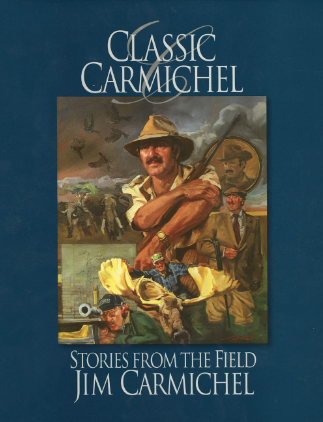 Classic Carmichel features nearly 400 pages of hunting adventures and firearms expertise by Carmichel, widely acknowledged as one of the foremost experts on sporting arms. Carmichel’s exploits and prowess had no equal during what is arguably the Golden Age of international hunting and shooting. These are not just stories by a well-traveled adventurer—they are pure literature, written with a style and eloquence that deserve inclusion in any collection of great outdoor books and writers. Buy Now
Classic Carmichel features nearly 400 pages of hunting adventures and firearms expertise by Carmichel, widely acknowledged as one of the foremost experts on sporting arms. Carmichel’s exploits and prowess had no equal during what is arguably the Golden Age of international hunting and shooting. These are not just stories by a well-traveled adventurer—they are pure literature, written with a style and eloquence that deserve inclusion in any collection of great outdoor books and writers. Buy Now

